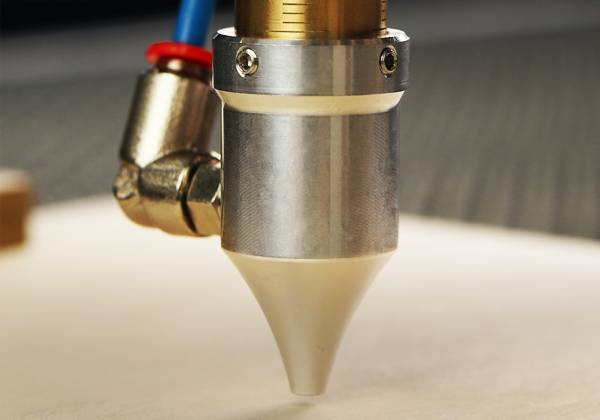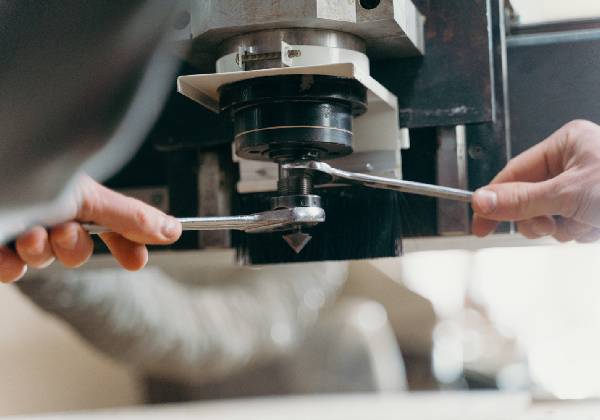Are you a CNC operator or a CNC machinist? If so, you may be wondering what the big difference is. In this post, we’ll explain the basics of these two professions and highlight some of the important differences.
We’ll also provide a guide to help you decide which is the right fit for you. So whether you’re looking to start your own business or expand your current one, read on to learn more!
What Are CNC Machines Used For?
CNC machines are used for a variety of purposes, including the manufacturing of parts and accessories for a wide array of products. They can be used to create objects from metal, plastic, wood, or other materials. Additionally, they are often employed in the production of intricate items such as jewelry or sculptures.
CNC machines come in a variety of sizes and shapes and can be operated by people who have little experience with them or those who have extensive knowledge in this field. They typically require electrical power and use computer-generated instructions to produce the desired result.
There is always room for improvement when it comes to CNC machines, so manufacturers continue to develop new technologies that make their jobs easier.
The Different Roles in a CNC Environment
Operator
Operators are the people who control the machine tools in a CNC environment. They are the ones who operate the buttons and axes on the machines, and they are responsible for making sure everything runs smoothly.
As button-pushers, operators are responsible for performing simple tasks like moving parts around on the machine or aligning them correctly. They need to have a good sense of timing and be able to work quickly and efficiently in order to keep the machines running at full capacity.
Set-up-Operator
The set-up operator is responsible for installing and setting up the CNC machine in the correct location, calibrating it according to factory specifications, and ensuring that all parts are properly aligned. They make sure that the machine is running smoothly and that any problems are fixed as soon as they’re detected.
Programmer
A programmer is responsible for writing code that controls the actions of a CNC machine. Code written in a programming language like G-Code is used to control the machine’s movements and tools. The programmer must be able to read, understand, and modify the code in order to make it work properly.

Programmer typically works with a computer monitor and keyboard in front of them, as well as a CNC machine directly in front of them. They use this equipment to input commands into the computer and see results on the screen.
Who is a CNC Machinist?
A CNC Machinist is a person who uses computer-controlled machine tools to fabricate parts, assemblies, or complete products from raw materials. They are responsible for controlling the height and position of individual cutting dies on industrial robotic arms that move along an axis.
This can be done using different software programs such as CAM (Computer Aided Manufacturing) or GCode (Graphic Integrated Programming).
What Are CNC Machines Used For?
CNC machines are commonly used in the manufacturing and production industries to help with the creation of products. They can be used for a variety of tasks, including cutting metal, fabricating parts, and creating complex patterns or shapes.
A CNC machine can grip objects with extreme accuracy, allowing for even the most intricate designs to be created. This technology is also particularly well-suited to creating components that are highly repetitive in nature, such as gears or rotors.
As a result of all of these factors, a career as a CNC Machinist could lead you into a variety of industries—from automotive manufacturing to medical devices—that require precision and quality assurance when it comes to their products.
Some common applications for CNC machines include car-making (where they’re used to create intricate bodywork), knifemaking (where they’re used to cut precise shapes out of materials like steel), medical equipment (like 3D printers that use CAD designs as input), and aerospace engineering (such as using them to create airplane engines).
There is really no limit to what you can do with a CNC machine – it’s basically a versatile tool that has countless uses across many different industries. If you have an interest in exploring or discovering new possibilities on a daily basis, then investing in one might just be the right decision for you!
What Does a CNC Machinist Do?
The typical duties of a CNC machinist include programming the machine to perform specific tasks, using safety glasses and other protective gear when working with machinery, monitoring the operation of machines vigilantly for any problems or issues that might arise, and ensuring that work areas are clean and free from debris so that productivity is not hindered.
In order to become a CNC machinist, you will need an accredited school degree in mechanical engineering technology or a related field plus 2 years of practical experience in industrial Machining Systems.
Who is a CNC Operator?
A CNC Operator is a skilled worker who uses precision machines to produce intricate parts or products. They typically have skills in metalworking, machining, and carpentry, along with experience operating CNC equipment.
A CNC operator’s role involves working on tasks that require fine accuracy and fast response times. This can include working with shapes that are highly complex or require the production of large numbers of identical parts. Because of this complexity, a good understanding of mechanics and engineering is essential for a successful career as a CNC operator.
In order to become proficient at their job, most workers undergo specialized training that covers everything from machine operation to tooling use.
What Does a CNC Operator Do?
Here are some responsibilities a CNC operator maintains on a daily basis:
Basic Maintenance
A CNC Operator performs basic maintenance on the machines that they work with. This includes things like oiling and cleaning the moving parts, checking the accuracy of the machine’s cutting path, and fixing any problems that arise. They may also be called upon to perform repairs or modifications to the machines.
Safety Protocols
A CNC operator is responsible for ensuring the safety of everyone on the job site by following specific safety protocols. These protocols include setting up and operating the machine safely, as well as monitoring the work environment to ensure that no one is in danger.
The CNC operator must also be aware of all the risks associated with the machine and take appropriate measures to minimize them.
For example, if there’s a risk of injury from moving parts, the operator will need to take steps to protect themselves. They will also need to follow any safety guidelines that have been put in place by the company or organization they are working for.
Technical Documentation

Technical documentation is essential because it allows people to use machines safely and effectively. It can also help prevent accidents from happening, as well as guide users through troubleshooting procedures if something goes wrong.
CNC Programming
A CNC operator uses computer numerical control (CNC) technology to program the movement of parts or tools in a manufacturing or construction environment. By programming these movements, the CNC operator can ensure that the parts or tools are produced accurately and on schedule.
In most cases, CNC programming is done using a computer program that is designed specifically for this purpose. The program contains instructions that tell the machine how to move the part or tool around based on a set of coordinates. These coordinates indicate where the part or tool should be located at any given time.
Basic Machine Operation
A CNC machine is a precision machine that uses computers to control the movement of industrial tools, such as saws, drills, and milling machines. The operator uses software to input the specifications for the desired shape, and the computer then controls the production process.
This can range from simple tasks like cutting pieces out of a piece of metal to more complex tasks like creating intricate patterns or sculptures.
Difference Between CNC Operator & CNC Machinist
CNC Operator
- Uses a computer to control the movements of the machine tools (milling, turning, drilling).
- Typically has more experience than CNC Machinist, although the two roles can be similar in some respects.
- Operates machines that require manual operation primarily in small or medium size production runs.
- Uses three-dimensional CAD software and CAM (computer-aided manufacturing) machines to create detailed plans for manufactured parts before Molding them in Metal, Ceramics, Plastic, etc.
CNC Machinist
- Is skilled at precision machining with milling, Turning, and Drilling operations using manually operated tooling.
- Typically uses large industrial machinery such as twin screw dry grinders/polishers, lathes & drills, etc.
- They are typically employed in fabrication shops where more complex shapes/specifications can be produced quickly without compromise in quality.